District Trendline, previously known as Teacher Trendline, provides actionable research to improve district personnel policies that will strengthen the teacher workforce. Want evidence-based guidance on policies and practices that will enhance your ability to recruit, develop, and retain great teachers delivered right to your inbox each month? Subscribe here.
Special
announcement: NCTQ is recruiting new members for our Teacher Advisory Group (TAG). The TAG supports NCTQ’s work by providing a source of
teacher voice and perspective. We are seeking current classroom teachers who
are interested in contributing to our work and learning more about teacher
policy. Click here to learn more and apply. Applications
are due June 10.
Substitute teachers are in the news more than usual lately,
from reports of shortages
and outsourcing
to proposed changes in state
law around substitutes’ education requirements. This month, our Teacher Trendline takes a look at substitute
teacher policies, covering education and licensing requirements, salary and
benefits.
Education and
licensing requirements
Most districts do not appear to require a college degree of
their substitutes. Across the districts
in the Teacher Contract Database, 49 districts require substitute teachers to
have a Bachelor’s degree, 40 require an Associate’s degree or some college
credit and 13 require only a high school diploma or GED. While most districts
address this issue in their contracts, 18 districts do not explicitly outline
education requirements for substitutes.
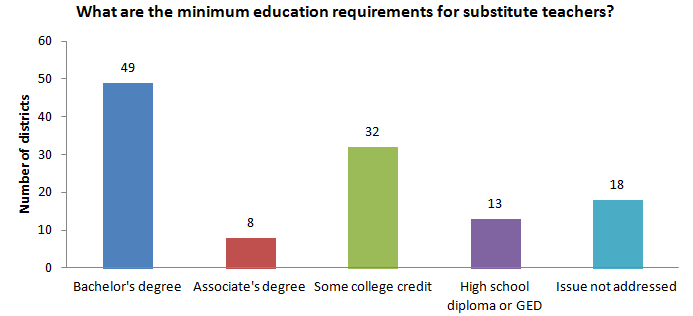
It is not as clear whether districts require substitutes to
have a teaching license. Almost half of
the districts in the database do not address the issue. This may be due to the
fact that licensure is generally an issue decided by the state. For the districts that do not mention
substitute licensing requirements in their contracts or local board policies,
we look to state regulations: 13 districts are in a state that requires a
license, while 27 are in states that do not.
Of the districts that do address substitute licensing in local
policy, nine (Anchorage, Bismarck, Fort Wayne (IN), Los Angeles, San Diego, Spokane, Philadelphia, Kanawha County (WV), andSeattle) require substitutes to
have a full teaching license. Bostonand Brevard County (FL) have somewhat
unique policies: substitutes are required to have licenses (a teaching license
in Boston and a substitute license
in Brevard) unless they have a
Bachelor’s degree in education.
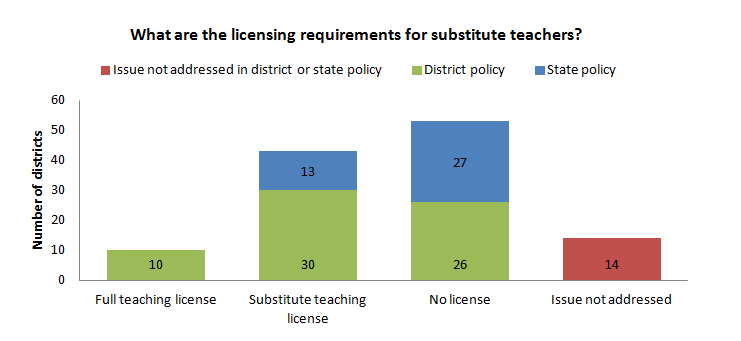
Evaluation
The vast majority (two-thirds) of the districts in the database
do not address whether substitute teachers are evaluated. Of the 26 districts that
require substitutes to be evaluated, eight (Los Angeles, Hillsborough County (FL), Boston,
New York City, Charleston County (SC), Nashville, Norfolk and Virginia Beach City) only require
long-term substitutes to be evaluated. An additional ten districts have
policies where evaluating substitutes is optional.
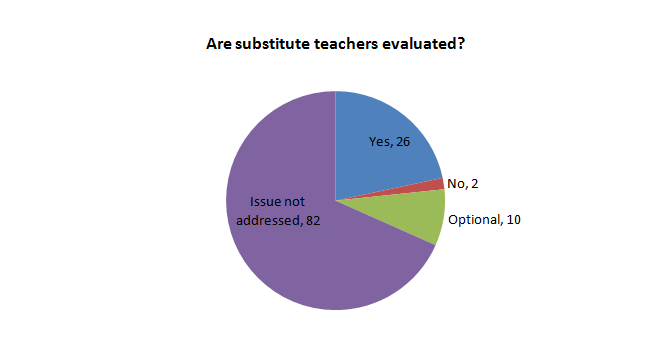
Compensation
The most common minimum daily pay rate for substitutes among
the districts in the Teacher Contract Database is between $71 and $90 per day.
The districts in our database with the highest minimum daily rates are Portland, OR ($182/day), Los Angeles ($173/day) and Milwaukee ($158/day).
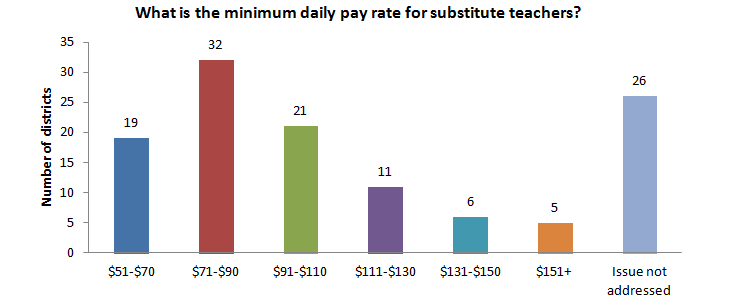
It
is worth noting that districts often differentiate substitute teacher pay based
on qualifications or experience. Of the districts in the database, 66
differentiate pay based on at least one of the following criteria: the type of
license a substitute holds, level of education or experience, or the number of
days taught. For example, the minimum rate in Austin is $75 per day, but
substitutes with a college degree earn $80 per day and substitutes with a
teaching license earn $85 per day.
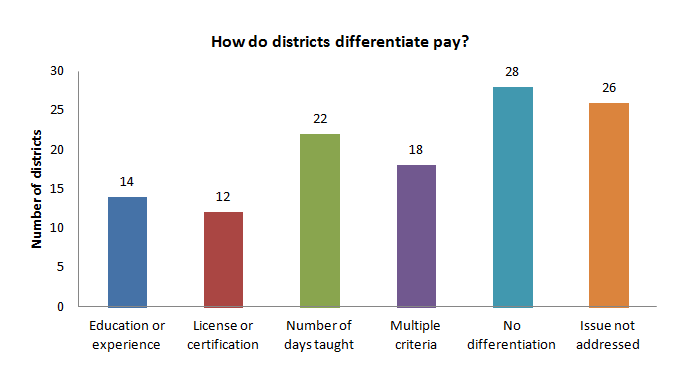
Pay is, of course, only one part of compensation. Some
districts provide health care coverage to substitutes, but the majority of
districts do not address this issue at all in contract or board policy.
Of the 28 districts that provide health
coverage, half provide health insurance only for long-term or full-time
substitutes, while the other half have other criteria for deciding who is
eligible.
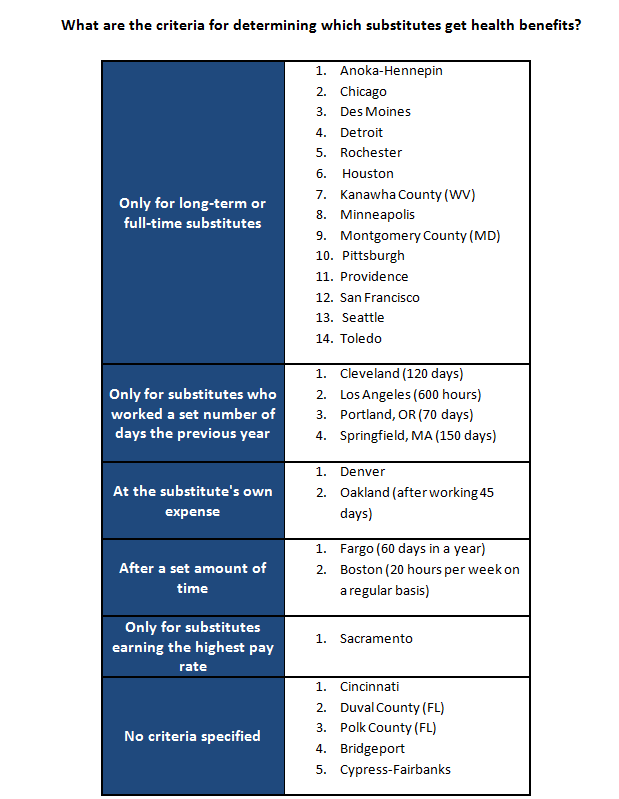
Outsourcing
substitute teachers
Des Moines and Philadelphia recently made headlines (here
and here)
for considering outsourcing substitute teachers through a private staffing
company rather than hiring them through the district.
Just how prevalent is this phenomenon? According to 2014 data from the Bureau
of Labor Statistics, the vast majority of substitute teachers (93 percent)
are employees of elementary and secondary schools, but about 5 percent of
substitutes work for temporary employment services. While outsourcing
substitute teachers isn’t a big trend yet, it will be interesting to see how
districts’ substitute teacher policies change if it becomes a more common
practice; rest assured we’ll cover those changes in a future Teacher Trendline.

